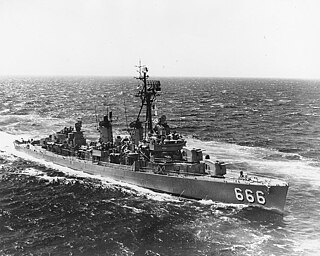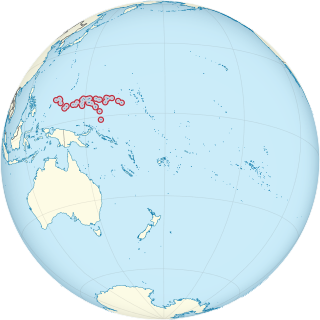
USS Anzio (ACV/CVE/CVHE-57), was a Casablanca-class escort carrier of the United States Navy that saw service during World War II in the Pacific War. Originally classified as an auxiliary aircraft carrier ACV-57, the vessel was laid down in 1942, in Vancouver, Washington, by the Kaiser Shipbuilding Company and initially named Alikula Bay, then renamed Coral Sea and redesignated CVE-57 in 1943. Coral Sea took part in naval operations supporting attacks on the Gilbert and Marshall Islands, New Guinea and the Marianas Islands. In September 1944, she was renamed Anzio. As Anzio, the escort carrier took part in assaults on the Bonin Islands and Okinawa. Following the cessation of hostilities in 1945, Anzio was among the escort carriers used in Operation Magic Carpet, returning US soldiers to the United States. Following this service, she was laid up in reserve at Norfolk, Virginia, in 1946. The escort carrier was redesignated CVHE-57 on 15 June 1955, before being sold for scrap in 1959.

USS Halsey Powell (DD-686), was a Fletcher-class destroyer of the United States Navy.

USS Wedderburn (DD-684), was a Fletcher-class destroyer of the United States Navy.

USS Suisun (AVP-53) was a United States Navy Barnegat-class small seaplane tender in commission from 1944 to 1955. It was named for northern California's Suisun Bay, which takes its name from the Native American Suisun tribe.

USS Laws (DD-558), a Fletcher-class destroyer, was a ship of the United States Navy.

USS Black (DD-666) was a Fletcher-class destroyer of the United States Navy.

USS Marshall (DD-676) was a Fletcher-class destroyer of the United States Navy.

USS Porterfield (DD-682) was a Fletcher-class destroyer of the United States Navy. Commissioned in 1943, she served in several Pacific campaigns during World War II, earning ten battle stars. She was decommissioned immediately after the end of the war but reactivated in 1951 for the Korean War, earning four more battle stars, and then served continuously until 1969. She was sunk as a target in 1982.

USS St. George (AV-16) was a Kenneth Whiting-class seaplane tender in the United States Navy.
USS Tekesta (AT-93) was Navajo-class fleet tug built during World War II for the United States Navy. Shortly after being built, it was crewed by trained Navy personnel and sent into the Pacific Ocean to provide tug service to damaged ships in battle areas. For successfully performing this dangerous work, she was awarded four battle stars by the war's end.

USS Lamons (DE-743) was a Cannon-class destroyer escortin service with the United States Navy from 1944 to 1946. She was sold for scrapping in 1973.

USS Hamlin (AV-15) was a Kenneth Whiting-class seaplane tender in the United States Navy.

USS Oliver Mitchell (DE-417) was a John C. Butler-class destroyer escort built for the United States Navy during World War II. Post-war, after active participation in the Pacific War, her crew returned home with five battle stars to their credit.

USS Onslow (AVP-48) was a United States Navy Barnegat-class seaplane tender in commission from 1943 to 1947 and from 1951 to 1960.

USS Shelikof (AVP-52) was a United States Navy Barnegat-class small seaplane tender in commission from 1944 to 1947 and from 1952 to 1954.

USS Corson (AVP-37) was a United States Navy Barnegat-class small seaplane tender in commission from 1944 to 1946 and from 1951 to 1956.

USS Ringness (APD-100) was a Crosley-class high speed transport that served in the United States Navy from 1944 to 1946. After spending 29 years in reserve, she was sold for scrapping in 1975.

USS Knudson (APD-101), ex-DE-591, later LPR-101, was a United States Navy high-speed transport in commission from 1944 to 1946 and from 1953 to 1958.

USS Rednour (APD-102) was a Crosley-class high speed transport that served in the United States Navy from 1945 to 1946. In December 1969, she was transferred to Mexico and served as Chihuahua until July 2001.

Naval Base Ulithi was a major United States Navy base at the Ulithi Atoll in the Caroline Islands in the western Pacific Ocean, to the north of New Guinea during World War II. The base was built to support the island-hopping Pacific war efforts of the allied nations fighting the Empire of Japan. In terms of the number of ships at one base, Naval Base Ulithi was the largest Naval Base in the world in 1944 and 1945, with over 600 ships at times.



















